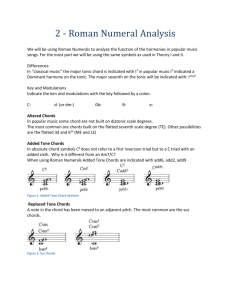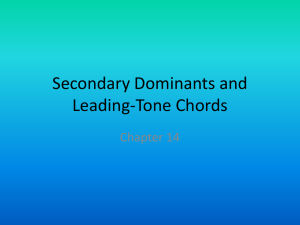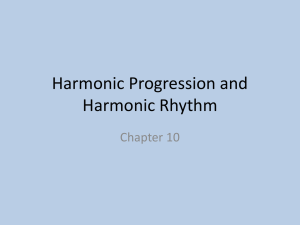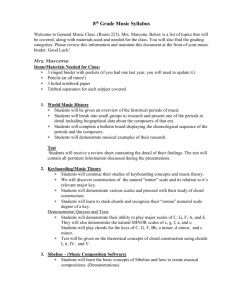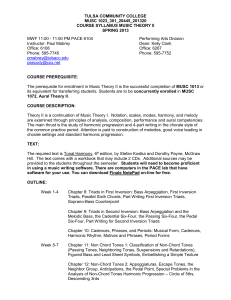12-13 harm dict - APTheory
advertisement
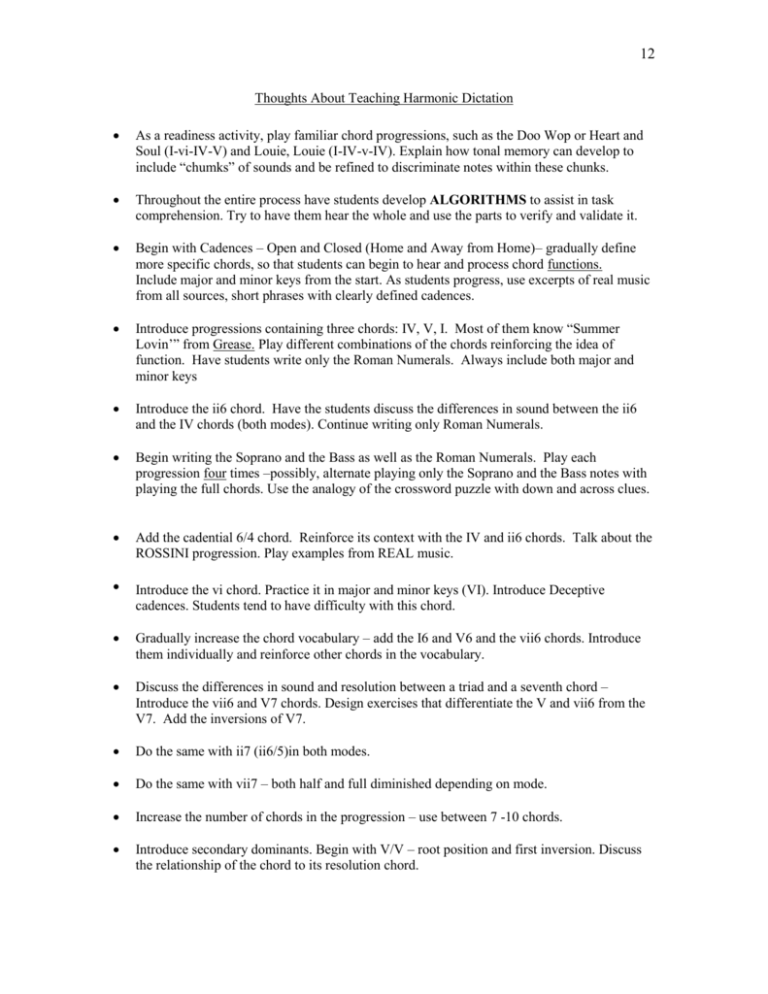
12 Thoughts About Teaching Harmonic Dictation As a readiness activity, play familiar chord progressions, such as the Doo Wop or Heart and Soul (I-vi-IV-V) and Louie, Louie (I-IV-v-IV). Explain how tonal memory can develop to include “chumks” of sounds and be refined to discriminate notes within these chunks. Throughout the entire process have students develop ALGORITHMS to assist in task comprehension. Try to have them hear the whole and use the parts to verify and validate it. Begin with Cadences – Open and Closed (Home and Away from Home)– gradually define more specific chords, so that students can begin to hear and process chord functions. Include major and minor keys from the start. As students progress, use excerpts of real music from all sources, short phrases with clearly defined cadences. Introduce progressions containing three chords: IV, V, I. Most of them know “Summer Lovin’” from Grease. Play different combinations of the chords reinforcing the idea of function. Have students write only the Roman Numerals. Always include both major and minor keys Introduce the ii6 chord. Have the students discuss the differences in sound between the ii6 and the IV chords (both modes). Continue writing only Roman Numerals. Begin writing the Soprano and the Bass as well as the Roman Numerals. Play each progression four times –possibly, alternate playing only the Soprano and the Bass notes with playing the full chords. Use the analogy of the crossword puzzle with down and across clues. Add the cadential 6/4 chord. Reinforce its context with the IV and ii6 chords. Talk about the ROSSINI progression. Play examples from REAL music. Introduce the vi chord. Practice it in major and minor keys (VI). Introduce Deceptive cadences. Students tend to have difficulty with this chord. Gradually increase the chord vocabulary – add the I6 and V6 and the vii6 chords. Introduce them individually and reinforce other chords in the vocabulary. Discuss the differences in sound and resolution between a triad and a seventh chord – Introduce the vii6 and V7 chords. Design exercises that differentiate the V and vii6 from the V7. Add the inversions of V7. Do the same with ii7 (ii6/5)in both modes. Do the same with vii7 – both half and full diminished depending on mode. Increase the number of chords in the progression – use between 7 -10 chords. Introduce secondary dominants. Begin with V/V – root position and first inversion. Discuss the relationship of the chord to its resolution chord. 13 Introduce the other common secondary dominants. V/ii, V/vi – root position and first inversion. Some Harmonic Dictation Idioms (use in major and minor keys) V(7) I – (Rossini progression) I vi IV V ii6 I I V6/4 I6 I IV6/4 I I V6/5 I iv6 V (Phrygian Half Cadence) V4/2 I6 IV V6/5/V V 6/4 Have students read questions carefully to determine similarities and differences among answer choices. This focuses their listening. Circle the option which best represents the chord progression you hear. Each example will be played TWICE. Example 1 a. b. c. d. I IV V V I IV V I I V V I I V V V Example 2 a. b. c. d. I I I I IV V I ii6 V I IV V V ii6 V V Example 3 a. b. c. d. i iv i ii6 i ii6 i iv V iv V ii6 i V i V Example 4 a. b. c. d. I I I I vi IV V iii IV V vi ii6 V iii ii6 V

